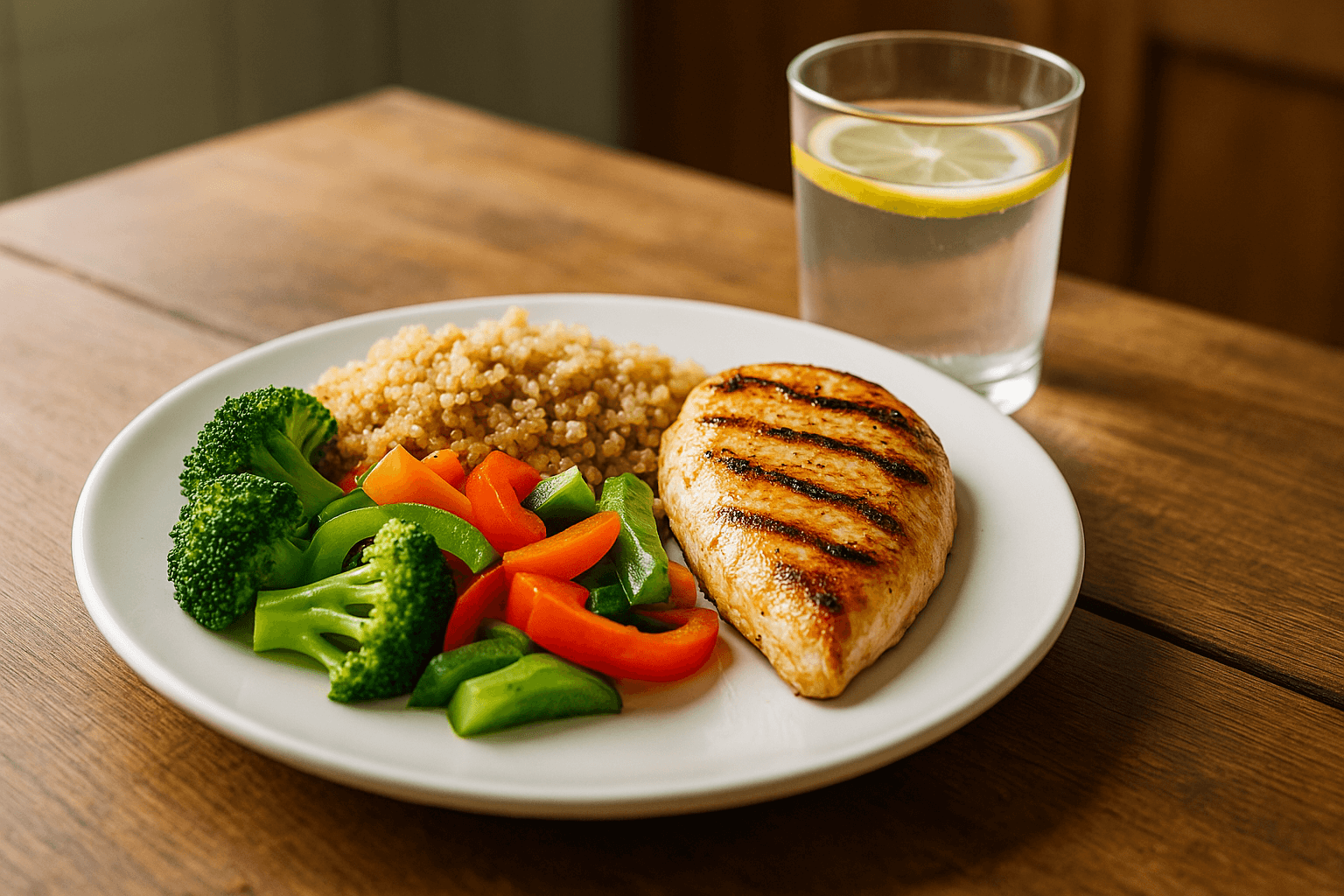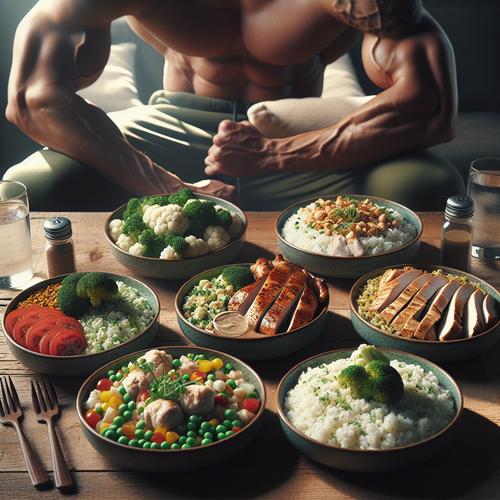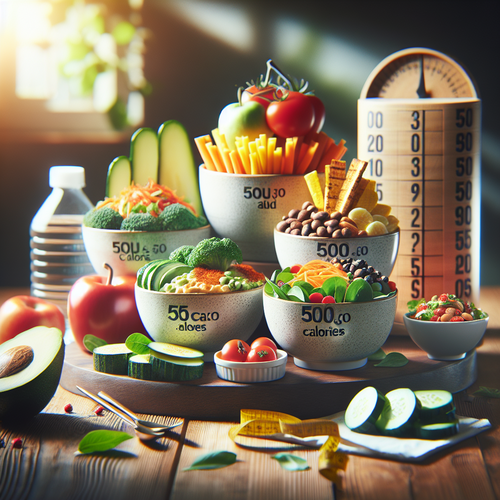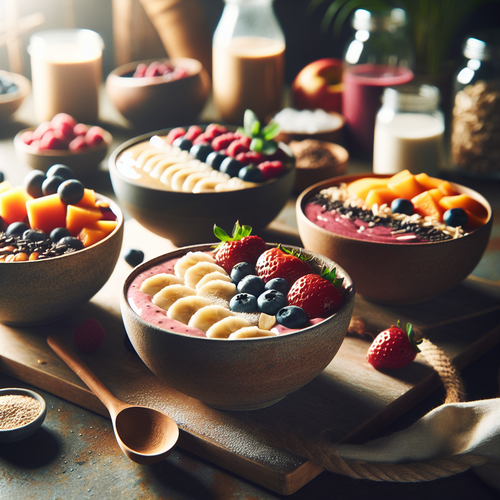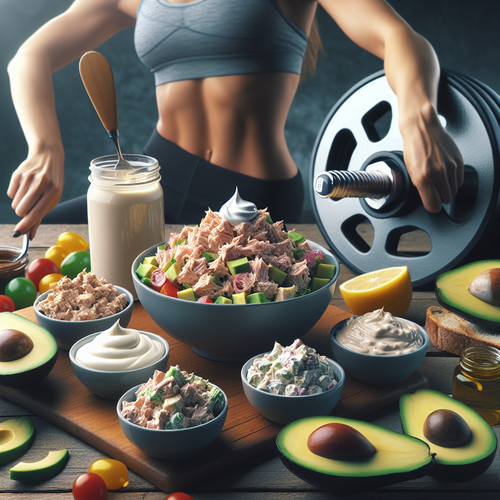The 400-Calorie Meal Blueprint: Your Definitive Guide to Quick, Filling, and Easy Recipes
Are you tired of the endless diet-and-fail cycle? Do you want to eat healthy, manage your weight, and feel satisfied, but lack the time and energy to decipher complicated recipes or choke down bland “diet food”? You are not alone. For many busy beginners, the problem isn’t a lack of recipes online, but a lack of a clear, repeatable system. This guide provides that system. We go beyond a simple list of meals to give you a complete, foolproof blueprint for conquering the 400-calorie meal challenge for good.
We will show you the science behind creating meals that are genuinely filling and satisfying, preventing the hunger that derails so many weight management efforts. We will also introduce our unique “Build-Your-Own-Meal” framework, a revolutionary tool developed to make healthy eating a sustainable and enjoyable part of your lifestyle. To see how we’ve helped others achieve their goals, you can learn more about our approach and mission. By the end of this definitive guide, you will have a complete 7-day dinner plan, a meal-prep strategy that saves you hours each week, and the confidence to create endless varieties of quick 400 calorie meals that you will actually look forward to eating.
Table of Contents
- Beyond the Calorie Count: The Science of Making 400-Calorie Meals Filling
- The Busy Beginner’s Playbook: Easy-Cleanup & Quick-Cooking Methods
- Become Your Own Chef: The ‘Build-Your-Own’ 400-Calorie Meal Framework
- Your Fail-Proof System: A 7-Day, 400-Calorie Dinner Plan & Meal Prep Guide
- Frequently Asked Questions
- Conclusion
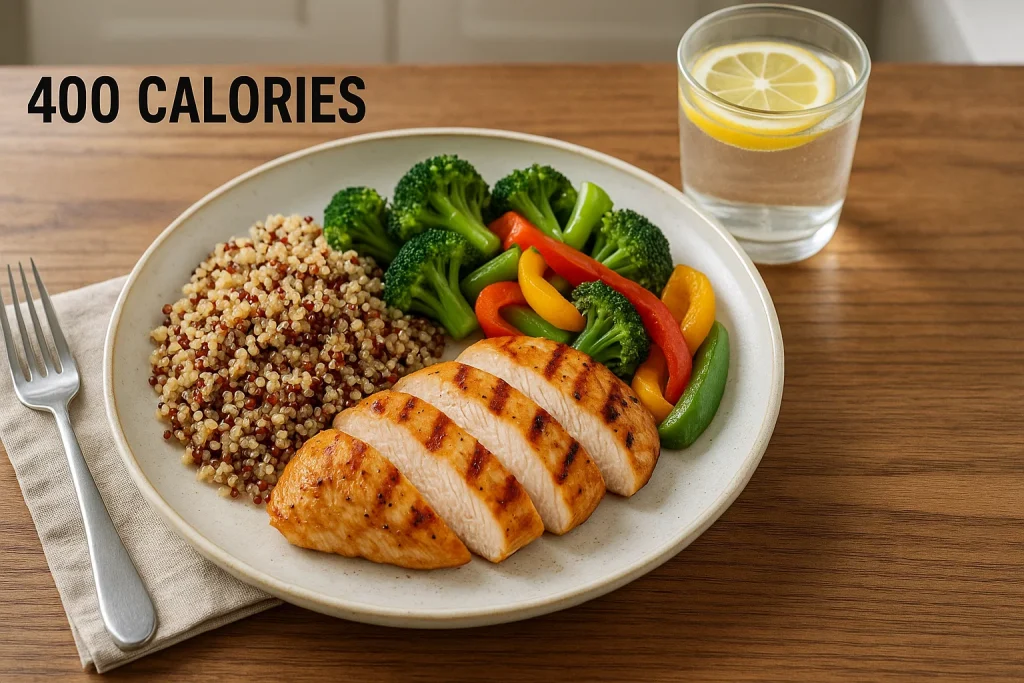
Beyond the Calorie Count: The Science of Making 400-Calorie Meals Filling
A successful eating plan isn’t just about counting calories; it’s about managing hunger. The fear of being constantly hungry is a major obstacle for anyone starting a new diet. The key to success is understanding the science of satiety—the feeling of fullness and satisfaction after a meal. By strategically choosing your ingredients, you can engineer meals that keep you full for hours, making it easy to stick to your goals. This scientific approach is the secret to learning how to make 400 calorie meals filling and sustainable. We’ll focus on three core principles: protein, fiber, and volume.
The Power of Protein: Your First Defense Against Hunger
Protein is the most satiating macronutrient. When you consume protein, it reduces levels of ghrelin, the “hunger hormone,” while boosting peptide YY, a hormone that signals fullness to your brain. Including a significant source of lean protein in every meal is your number one strategy for staving off hunger pangs.
Lean Protein Powerhouses (per 4oz serving, cooked):
- Chicken Breast (skinless): ~185 calories
- Turkey Breast (skinless): ~150 calories
- Cod or Tilapia: ~120 calories
- Shrimp: ~110 calories
- Firm Tofu: ~120 calories
- Lentils (1 cup, cooked): ~230 calories
- 93% Lean Ground Turkey: ~220 calories
Fiber is Your Friend: How to Stay Full for Hours
Fiber is a type of carbohydrate that your body can’t digest. It plays a crucial role in stabilizing blood sugar and promoting satiety. There are two types: soluble fiber, which forms a gel-like substance in your gut, slowing digestion and making you feel full longer, and insoluble fiber, which adds bulk to stool and helps food pass more quickly through the digestive system. A diet rich in both is essential.
High-Fiber, Low-Calorie Champions:
- Vegetables: Broccoli, spinach, kale, bell peppers, Brussels sprouts, carrots
- Legumes: Lentils, chickpeas, black beans, kidney beans
- Fruits: Berries, apples, pears
The Magic of Volume Eating: Eat More, Not Less
One of the most powerful psychological tools for weight management is volume eating. This strategy focuses on eating larger quantities of foods that are low in calorie density. These are typically foods with high water and fiber content, like fruits and non-starchy vegetables. This allows you to fill your plate and your stomach, signaling fullness to your brain without overconsuming calories. Think about it: 100 calories of olive oil is less than a tablespoon, while 100 calories of spinach is a massive, plate-filling mountain. Incorporating high volume low calorie meals into your routine is a game-changer. For visual inspiration, the South Dakota Department of Health provides great examples of simple, low-calorie snacks and light meals that help illustrate how much food you can enjoy for a small calorie budget.
The Busy Beginner’s Playbook: Easy-Cleanup & Quick-Cooking Methods
Time and complexity are two of the biggest barriers to consistent healthy eating. The belief that nutritious meals require hours of chopping and a mountain of dirty dishes is a myth. The solution lies in mastering a few simple cooking methods that deliver maximum flavor with minimal effort and mess. By focusing on simple techniques and accessible ingredients, you can make easy cleanup low calorie meals a daily reality. This playbook is designed for anyone seeking quick 400 calorie meals using 400 calorie meals with simple ingredients.
The 30-Minute Meal: One-Pot and Sheet-Pan Recipes
One-pot and sheet-pan dinners are the ultimate weeknight heroes. The concept is simple: combine your protein, vegetables, and seasonings in a single pot or on a single baking sheet and let the oven or stovetop do the work. This method streamlines cooking and dramatically reduces cleanup time.
Sheet-Pan Dinner Template:
- Protein: Choose a quick-cooking protein like chicken breast, sausage, salmon, or shrimp.
- Vegetables: Add hearty vegetables like broccoli, bell peppers, onions, zucchini, or asparagus.
- Fat & Seasoning: Toss everything with 1-2 teaspoons of olive oil and your favorite seasonings (e.g., salt, pepper, garlic powder, paprika, Italian herbs).
- Bake: Arrange in a single layer on a parchment-lined baking sheet and bake at 400°F (200°C) for 20-25 minutes, or until the protein is cooked through and vegetables are tender.
Example: Sheet-Pan Lemon Herb Chicken & Asparagus (~380 calories)
- 4 oz chicken breast, cut into 1-inch pieces
- 2 cups asparagus, trimmed and halved
- 1/2 red onion, sliced
- 1 tbsp olive oil
- Juice of 1/2 lemon
- 1 tsp dried oregano, salt, and pepper
- Toss all ingredients together, spread on a sheet pan, and bake at 400°F for 20 minutes.
Your Secret Weapon: Air Fryer Recipes for Rapid Meals
The air fryer is a game-changer for single-serving meals and achieving crispy textures with a fraction of the oil used in deep-frying. It circulates hot air at high speed, cooking food quickly and evenly. It’s perfect for preparing a piece of salmon, crisping up tofu, or roasting vegetables in under 15 minutes. For a wide variety of healthy recipes that can be filtered by cooking method, the USDA’s MyPlate Kitchen offers an extensive database of healthy recipes to explore.
Air Fryer Pro Tips:
- Don’t overcrowd the basket; cook in a single layer for best results.
- A light spritz of cooking oil is all you need for crispiness.
- Shake the basket halfway through cooking to ensure even browning.
No Kitchen Required: Delicious No-Cook 400-Calorie Lunch Ideas
For the ultimate in convenience, no-cook meals are your best friend. These are assembly-only recipes perfect for busy workdays or when you simply don’t have the energy to turn on the stove. These no-cook 400 calorie lunch ideas rely on having a few pantry and fridge staples on hand.
Pantry Staples for No-Cook Lunches:
- Canned tuna or salmon (in water)
- Canned chickpeas or black beans (rinsed)
- Pre-cooked quinoa or brown rice pouches
- Whole-wheat tortillas or crackers
- Jarred roasted red peppers
- Hummus and other bean dips
- Nuts, seeds, and light vinaigrette dressing
Example: Speedy Chickpea Salad Wrap (~390 calories)
- Mash 1/2 cup canned chickpeas with 2 tbsp hummus, a squeeze of lemon juice, and a pinch of salt and pepper.
- Stir in 1/4 cup diced celery and red onion.
- Serve in a large whole-wheat tortilla with a handful of spinach.
Become Your Own Chef: The ‘Build-Your-Own’ 400-Calorie Meal Framework
Following recipes is a great start, but true food freedom comes from understanding how to build a balanced, satisfying meal on your own. This simple, three-step framework empowers you to become your own chef, mixing and matching components to create endless meal variations that always hit the 400-calorie target. Think of it as your personal formula for delicious, healthy meals every time.
Step 1: Pick Your Protein Power (150-200 Calories)
This is the foundation of your meal, providing the essential staying power to keep you full and satisfied. Choose one from the list below.
- 4 oz Chicken or Turkey Breast
- 4 oz Salmon or Cod
- 5 oz Shrimp
- 4 oz 93% Lean Ground Turkey
- 1 cup Lentils or Chickpeas
- 5 oz Firm Tofu
- 2 Large Eggs + 1/2 cup Egg Whites
Step 2: Load Up on Non-Starchy Veggies (50-100 Calories)
This is where you add volume, fiber, vitamins, and minerals. Don’t be shy here—fill at least half your plate. Aim to “eat the rainbow” for a wider variety of nutrients. Mix and match freely.
- Spinach or Kale
- Broccoli or Cauliflower
- Asparagus or Green Beans
- Bell Peppers (any color)
- Zucchini or Yellow Squash
- Mushrooms
- Onions
- Tomatoes
- Cucumbers
- Brussels Sprouts
Step 3: Add Smart Carbs & Healthy Fats (100-150 Calories)
This final component provides sustained energy and enhances flavor and satisfaction. Portion control is key here, so be mindful of the recommended serving sizes. Choose one carbohydrate and one fat.
Smart Carbohydrates:
- 1/2 cup cooked Quinoa
- 1/2 cup cooked Brown Rice
- 1/2 cup cooked Whole Wheat Pasta
- 1 small Sweet Potato (baked)
- 1 slice Whole Grain Bread
Healthy Fats:
- 1/4 Avocado
- 1 tbsp Olive Oil or Vinaigrette
- 1 oz (about 20) Almonds
- 1 tbsp Chia or Flax seeds
Your Fail-Proof System: A 7-Day, 400-Calorie Dinner Plan & Meal Prep Guide
Theory is great, but execution is what matters. To eliminate all guesswork and set you up for immediate success, we’ve created a complete 7-day dinner plan. This plan is designed for under 400 calorie meals for busy professionals and includes delicious vegetarian options. Combined with our simple meal prep guide, this system is your key to consistency.
Your Complete 7-Day Dinner Plan (with Recipes)
Here is a full week of simple, delicious dinners that fit our framework. For those looking for even more inspiration, the National Heart, Lung, and Blood Institute offers a downloadable cookbook of heart-healthy dinners with full nutritional info. You can also explore our own growing collection of healthy and delicious recipes.
- Monday: Lemon Herb Salmon with Roasted Asparagus & Quinoa
4 oz salmon, 1 cup asparagus, 1/2 cup quinoa. Season salmon and asparagus with lemon, herbs, and 1 tsp olive oil. Roast at 400°F for 15-20 min.
Approx: 395 calories, 30g protein. - Tuesday: Turkey & Black Bean Tacos
Sauté 4 oz 93% lean ground turkey with taco seasoning. Serve in two small corn tortillas with 1/4 cup black beans, lettuce, tomato, and salsa.
Approx: 380 calories, 28g protein. - Wednesday: (Vegetarian) Lentil & Vegetable Curry
Sauté 1/2 onion and 1 cup mixed veggies (like bell peppers and spinach). Add 3/4 cup cooked lentils, 1/4 cup coconut milk light, and 1 tsp curry powder. Simmer until heated through.
Approx: 360 calories, 15g protein. This is one of our favorite 400 calorie vegetarian meals for beginners. - Thursday: Sheet-Pan Chicken Sausage with Peppers & Onions
Toss 1 cooked chicken sausage (sliced), 1 sliced bell pepper, and 1/2 sliced onion with 1 tsp olive oil and Italian seasoning. Roast at 400°F for 20-25 min.
Approx: 350 calories, 20g protein. - Friday: Quick Shrimp Scampi with Zucchini Noodles
Sauté 5 oz shrimp with 2 cloves garlic in 2 tsp olive oil. Add 2 cups of spiralized zucchini and a squeeze of lemon juice. Cook for 2-3 minutes until zucchini is tender-crisp.
Approx: 310 calories, 28g protein. - Saturday: (Vegetarian) Black Bean Burgers on Lettuce Buns
Pan-fry one store-bought or homemade black bean burger. Serve on a large lettuce “bun” with a slice of tomato, onion, and 1/4 avocado on top. Serve with a side of steamed green beans.
Approx: 390 calories, 18g protein. - Sunday: One-Pot Turkey Chili
In a pot, brown 4 oz of ground turkey. Add 1/2 can of diced tomatoes, 1/2 cup kidney beans, and chili seasonings. Simmer for at least 20 minutes.
Approx: 375 calories, 32g protein.
Meal Prep Mastery for One: Your Sunday Reset
A little prep on Sunday makes your week infinitely easier. This simple plan focuses on 400 calorie meal prep for one and can be done in under 90 minutes.
- Batch Cook Grains: Cook a large batch of quinoa or brown rice for the week. Let it cool completely before storing it in an airtight container in the fridge.
- Wash & Chop Veggies: Wash and chop vegetables like bell peppers, onions, broccoli, and asparagus. Store them in separate containers so they’re ready to be thrown onto a sheet pan or into a skillet.
- Portion Proteins: If you bought proteins in bulk, portion them out into individual servings (e.g., 4 oz chicken breasts) in bags or containers. You can even marinate them ahead of time (like the salmon with lemon and herbs).
- Make a Dressing: Whisk together a simple vinaigrette (olive oil, vinegar, lemon juice, mustard, salt, pepper) to use on salads and bowls throughout the week.
The Downloadable Toolkit: Your Free 400-Calorie Meal Blueprint PDF
To make this entire system as easy as possible, we’ve bundled everything into a single, easy-to-use PDF. Get instant access to the complete 7-Day Plan, a printable shopping list, and the Build-Your-Own-Meal Framework. Download it, print it, and stick it on your fridge!
Frequently Asked Questions
Q1: I’m a busy professional, will I realistically have time to cook these meals?
Absolutely. This entire system was designed for you. The recipes average 20-30 minutes of cooking time, and methods like sheet-pan and no-cook meals drastically reduce active time and cleanup. The “Sunday Reset” meal prep plan further cuts down nightly cooking to just 10-15 minutes of assembly or reheating.
Q2: Can I make these recipes on a tight budget?
Yes. We intentionally focused on affordable staples. Choosing plant-based proteins like lentils and beans, buying vegetables that are in season, and utilizing frozen produce are all excellent ways to create budget friendly 400 calorie recipes. Batch cooking grains and prepping at home also significantly reduces the cost associated with buying pre-made convenience foods.
Q3: Are the ingredients in these recipes simple to find at a regular supermarket?
Yes. Every ingredient suggested in our framework and meal plan was chosen for its accessibility. You won’t need to visit specialty health food stores. From chicken breast and quinoa to broccoli and canned beans, everything can be found at your local grocery store, making it easy to create 400 calorie meals with simple ingredients.
Conclusion
Achieving your health and weight management goals with delicious food isn’t about finding a single magic recipe; it’s about implementing a smart, flexible, and sustainable system. You now possess that system. You understand the science of satiety to combat hunger, you have a playbook of fast and easy cooking methods, you are empowered with a framework to build your own meals, and you have an actionable 7-day plan to start immediately.
You are now fully equipped to leave the frustration of dieting behind and start cooking with confidence. You have the tools to save time, feel satisfied, and create an endless variety of quick 400 calorie meals that are both filling and delicious. Your journey to sustainable, enjoyable healthy eating doesn’t have to wait another day.
Download your free “400-Calorie Meal Blueprint” PDF now to get the complete 7-day plan, shopping list, and meal-builder framework. Start your journey tonight!


